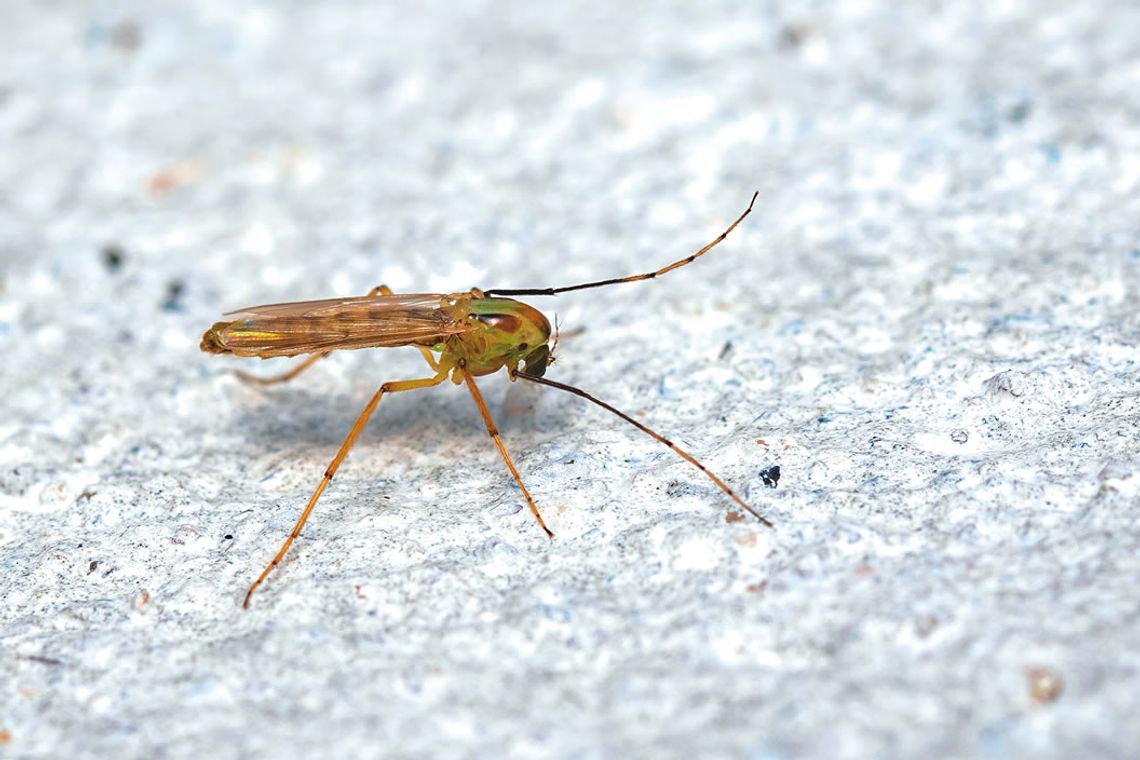By Doug Carter, Rankin County Extension Agent
Chironomid midges are a common problem around homes and buildings located near water. Midges are small, mosquito-like flies, belonging to the family Chironomidae. They superficially resemble mosquitoes, but are incapable of biting, they are sometimes called “blind mosquitoes." Midges can easily be distinguished from mosquitoes by looking at their antennae, which are large and somewhat resemble a feather duster, while the antennae of mosquitoes are smaller and less conspicuous.
The larvae of most midges live in the water, on the bottom of the lake, or attached to rocks, wood and other structures within the water. There they feed on decayed organic matter and smaller organisms. Most species complete several generations per year.
Midges are a very important part of the ecosystem and play a key role in the food chain. Therefore, healthy midge populations often translate into healthy fish populations. Midges are such a key part of aquatic ecology that they are often studied and used in assessing water quality. Drastic shifts in numbers of species of midges present in a body of water can be indicators of changes in water quality. During some years and/or during certain times of the year, populations of adult midges can be especially high, resulting in significant nuisances to homeowners and businesses located near bodies of water, that are inhabited by midge.
Adult midges are strongly attracted to lights and minimizing outdoor lights during the midge season or changing to sodium vapor lights, rather than mercury vapor lights bulbs, is one way to reduce the concentrations of midges in sensitive areas. Sodium vapor bugs are less attractive to insects but are also more costly. Recently, LED lights have been developed for outdoor lighting, and many of these emit a light spectrum with low attraction to insects. Replacing older exterior lights with new LED lights that are not attractive to insects is an excellent way to reduce the numbers of nuisance insects, including chironomid midge, around buildings. Just make sure the lights you select have low insect attraction.
Insecticides are not very helpful for controlling adult midges around buildings that experience heavy midge populations. Light management is the key thing to focus on for midge control. Any steps that can be taken to reduce the amount of light visible around a building at night, especially light wavelengths that is attractive to insects, will reduce its attractiveness to midge and this should reduce the number of midges that accumulate around a building.
This will include steps such as:
- Minimizing outdoor lighting
- Keeping light-proof blinds closed over windows at night
- Shading outdoor lights so that light is directed downward and not out into the night
- Mounting outdoor lights on poles 50 plus feet away from buildings with light directed back towards areas of the building that need to be lit
- Installing outdoor lights that emit frequencies that are less attractive to midge and other insects
- Painting houses in midge-prone areas with darker colors.
Source: Bugs Eye View, Mississippi State University Extension, Chironomid Midge, vol. 4, no 18, Dr. Blake Layton.


Comment
Comments